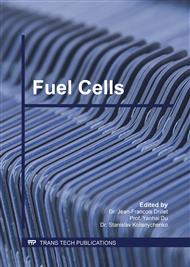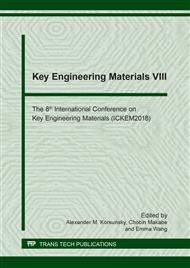p.323
p.331
p.336
p.342
p.350
p.359
p.365
p.371
p.376
Design and Implementation of Microbial Fuel Cell Using Carbon Paste Electrode
Abstract:
This study was conducted to design and implement microbial fuel cells (MFC) using graphite and carbon paste electrode to harness electricity from sewage water. The effect of the number of anodic graphite electrodes and concentration of zinc acetate on the voltage output was investigated. One-way ANOVA at 5% level of significance showed that there is no significant difference between the number of graphite electrodes and the voltage output of the MFC. The zinc acetate concentrations used were 0.005M, 0.01N, 0.02M, and 0.04M. Result showed that there was no significant difference using the 0.005M, 0.01M, and 0.04M zinc acetate concentration. The Tukey simultaneous comparison revealed that 0.02M MFC exhibited a significant difference in the voltage output compared to the other concentrations. The study showed that carbon paste electrodes can be utilized in MFC as an alternative to other electrodes that are commonly used.
Info:
Periodical:
Pages:
350-355
Citation:
Online since:
August 2018
Keywords:
Price:
Сopyright:
© 2018 Trans Tech Publications Ltd. All Rights Reserved
Share:
Citation:



